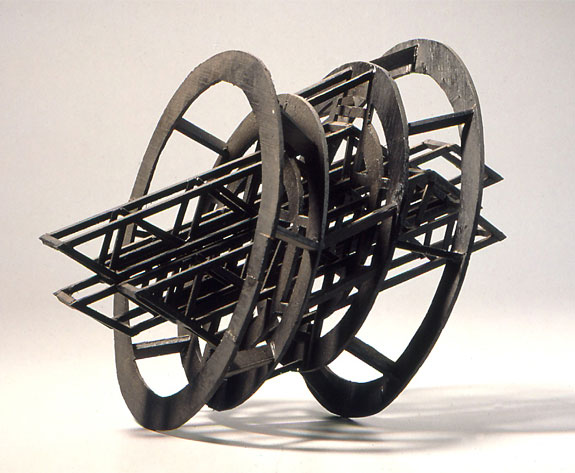 [Image: From Modeling the Universe by Linda Fleming, courtesy of the Nevada Museum of Art].
[Image: From Modeling the Universe by Linda Fleming, courtesy of the Nevada Museum of Art].
The Nevada Museum of Art’s Center for Art + Environment—which, three years after its founding, “remains the only research institute in the world devoted to the subject of creative interactions with natural, built, and virtual environments”—is hosting its second Art + Environment Conference this year.
The line-up is incredible. From 29 September-1 October, at the Nevada Museum of Art in Reno, expect to hear from Edward Burtynksy (whose extraordinary Oil series will be on display at the museum in 2012), Chris Jordan, Amy Franceschini, Fritz Haeg, Jorge Pardo, Alexander Rose of the Long Now Foundation, Newton & Helen Mayer Harrison, Leo Villareal, William L. Fox, and nearly two dozen others, including a panel featuring architects Liam Young, from Tomorrow’s Thoughts Today, and Mark Smout & Laura Allen, authors of Pamphlet Architecture #28: Augmented Landscapes, moderated by none other than Bruce Sterling.
Expect to hear about such topics as “Designing for Longevity,” “Designing the Wild and Cultivating the City,” “Designing Architectures for Environmental Change,” “Farming in the Future,” and “Altering the Landscape,” among many others, including an announcement from Nicola Twilley and I about a major cultural and landscape research project we will be undertaking together in 2012.
 The Museum has also recently announced a discounted student rate for conference tickets, so definitely consider attending; Reno is presumably not a city you would otherwise find yourself passing through on a regular basis, but it’s not a bad drive up from San Francisco, Las Vegas, or even Los Angeles, and there will be tons to see and do.
The Museum has also recently announced a discounted student rate for conference tickets, so definitely consider attending; Reno is presumably not a city you would otherwise find yourself passing through on a regular basis, but it’s not a bad drive up from San Francisco, Las Vegas, or even Los Angeles, and there will be tons to see and do.
Also on display at the Nevada Museum of Art during the conference, for instance, will be a massive show called The Altered Landscape: Photographs of a Changing Environment, whose gorgeous, full-color catalog published by Rizzoli and featuring contributions by Lucy Lippard and W.J.T. Mitchell, will also be available at the Conference.
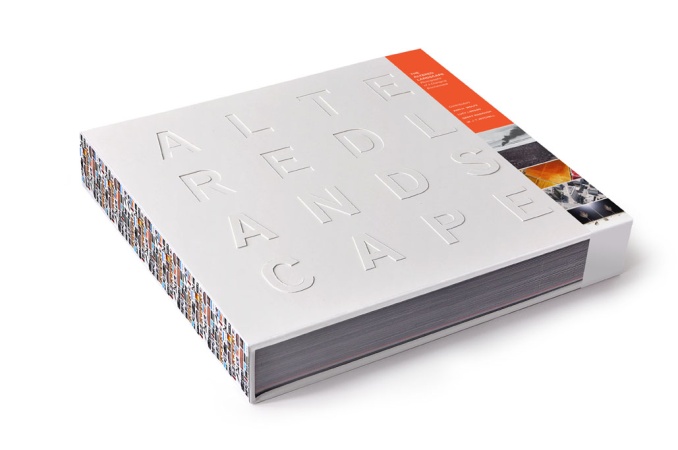 [Image: The Altered Landscape: Photographs of a Changing Environment edited by Ann M. Wolfe].
[Image: The Altered Landscape: Photographs of a Changing Environment edited by Ann M. Wolfe].
You can then walk down the hall to see Fog Garden: The Architecture of Water. Quoting at length:
People have been using dew from fog as a source of drinking water for centuries, but it wasn’t until the 1950s that scientists in Chile and elsewhere began measuring the moisture content of clouds and designing structures to collect it.
During the last five years, several groups of architects have been testing small models of fog collectors in the Atacama Desert, a place where it has not rained in recorded history, and fog is the only source of moisture.
Working with the Atacama Desert Center and students from the Catholic University in Santiago, architect Rodrigo Pérez de Arce is overseeing the creation of models for a large-scale complex of structures, the Fog Garden, that would collect enough water to both support a garden and satisfy the needs of a nearby village. This exhibition is the first time these structures have been displayed, and along with sample building materials and documentation, form an archive that is important to artists, architects, and scientists.
And then onward from there to see Shirin Neshat’s film Passage—

 [Images: From Passage by Shirin Neshat, courtesy of the Nevada Museum of Art].
[Images: From Passage by Shirin Neshat, courtesy of the Nevada Museum of Art].
—before stopping in to see Linda Fleming’s awesomely intricate “models of the universe.”
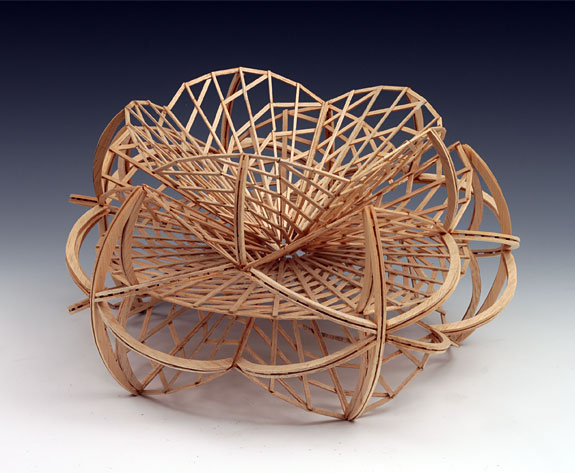 [Image: From Modeling the Universe by Linda Fleming, courtesy of the Nevada Museum of Art].
[Image: From Modeling the Universe by Linda Fleming, courtesy of the Nevada Museum of Art].
And that’s barely half of what will be on display during the conference.
You’ll also be able to see Sierra Nevada: An Adaptation by Newton & Helen Mayer Harrison; that will consist of “a 30-foot-long map of the mountain range, topographical sketches of its seventeen principal watersheds, and aerial photographs of sites in the Truckee and Yuba watersheds.”
Australia’s Murray River, a “series of sustainable design solutions” exploring “overlaps and adjacencies between architecture and landscape” by conference presenter Richard Black, will also be on display nearby.
Not last—as there will be several smaller exhibitions up, as well—and, I hope, also not least, is Landscape Futures: Instruments, Devices and Architectural Inventions. Landscape Futures features work by a group of absolute all-stars:
—David Benjamin & Soo-in Yang from The Living
—Mark Smout & Laura Allen from Smout Allen
—David Gissen
—Mason White & Lola Sheppard from Lateral Office & InfraNet Lab
—Chris Woebken
—Liam Young
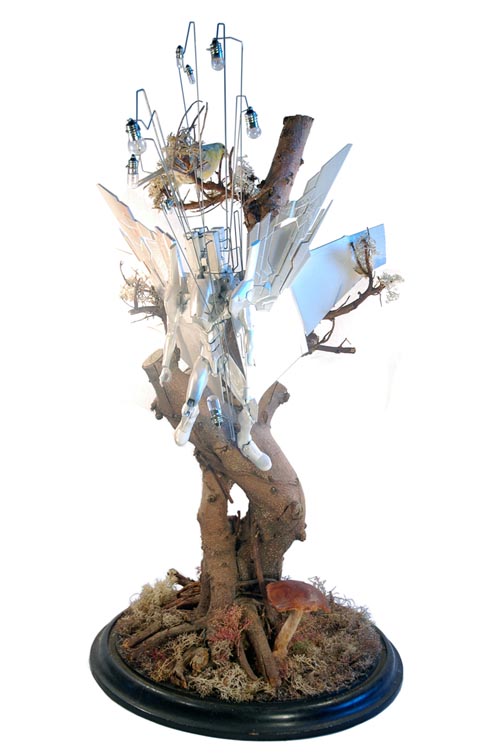 [Image: “Electric Aurora” by Liam Young, from Specimens of Unnatural History].
[Image: “Electric Aurora” by Liam Young, from Specimens of Unnatural History].
I am especially honored to be the curator of this exhibition, able to have commissioned new work from many of the exhibitors, and to be the editor of a forthcoming book that will document the exhibition in full, including last winter’s Landscape Futures Super-Workshop. That book will feature several outside contributions, and is being designed by Atley G. Kasky of, among other things, but does it float.
I will be writing more about both the exhibition and the book soon, but keep it on your radar, if it sounds like something that might be of interest.
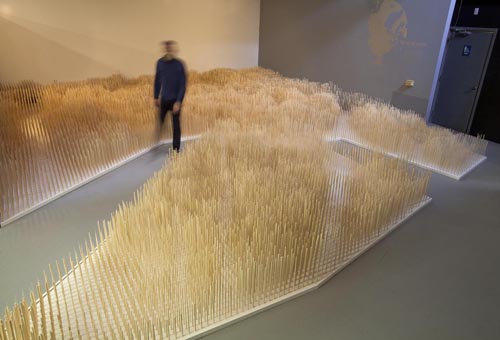 [Image: From The Active Layer by Lateral Office; photo by Michelle Litvin].
[Image: From The Active Layer by Lateral Office; photo by Michelle Litvin].
In any case, there are a million reasons to attend the Center for Art + Environment Conference this year, as I hope the above post makes clear; consider getting a group of friends or colleagues together to spend the weekend up in Reno, a city you might not otherwise be visiting any time soon (and where you can wear bald eagle t-shirts with abandon and gamble till the sun comes up—not to mention visit the National Bowling Stadium), and dive into an incredible range of exhibitions, talks, and programs.
Further, if you’re a student or educator, also think about the possibility of bringing a whole class to attend; between the conference participants and the museum’s exhibitions, think of it as a weekend super-workshop for art, architecture, and the global environment.
Read more at the conference website.
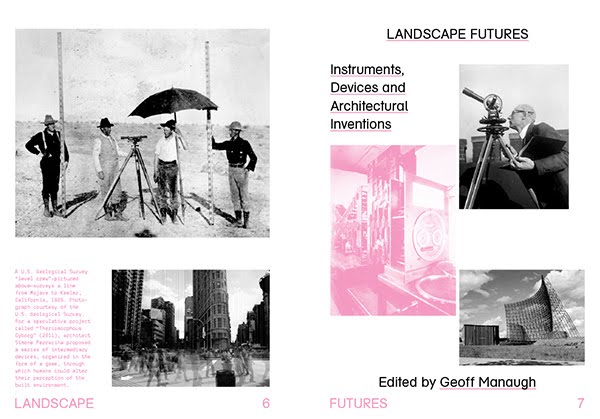 [Image: Internal title page from Landscape Futures; book design by Everything-Type-Company].
[Image: Internal title page from Landscape Futures; book design by Everything-Type-Company].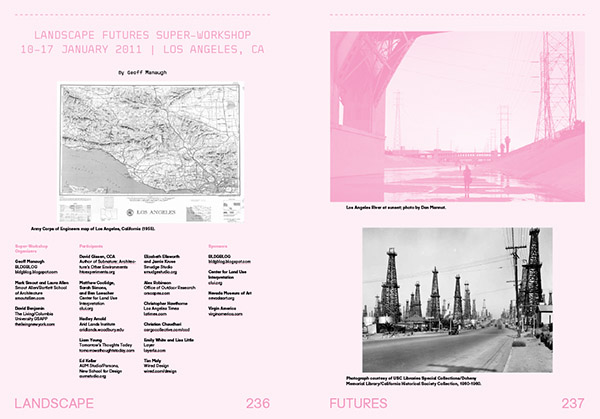
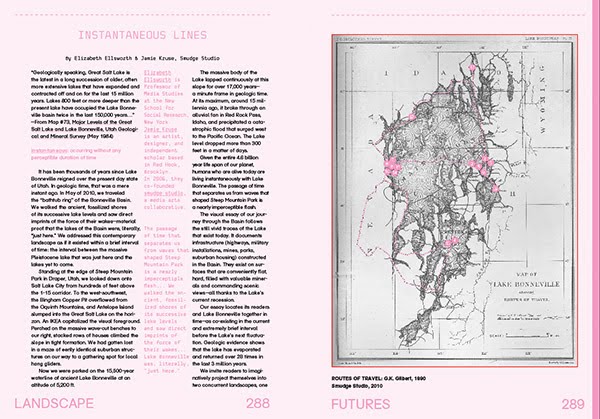
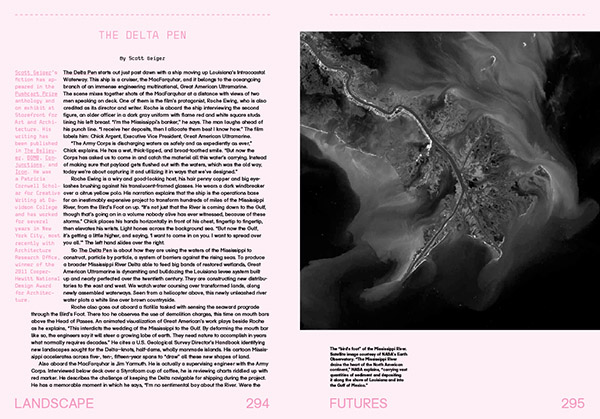
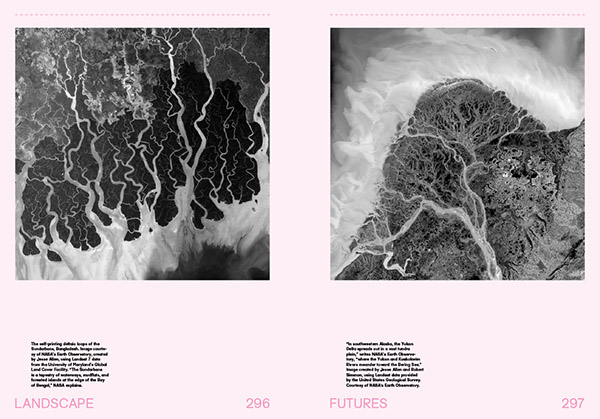 [Images: A few spreads from the “Landscape Futures Sourcebook” featured in Landscape Futures; book design by Everything-Type-Company].
[Images: A few spreads from the “Landscape Futures Sourcebook” featured in Landscape Futures; book design by Everything-Type-Company].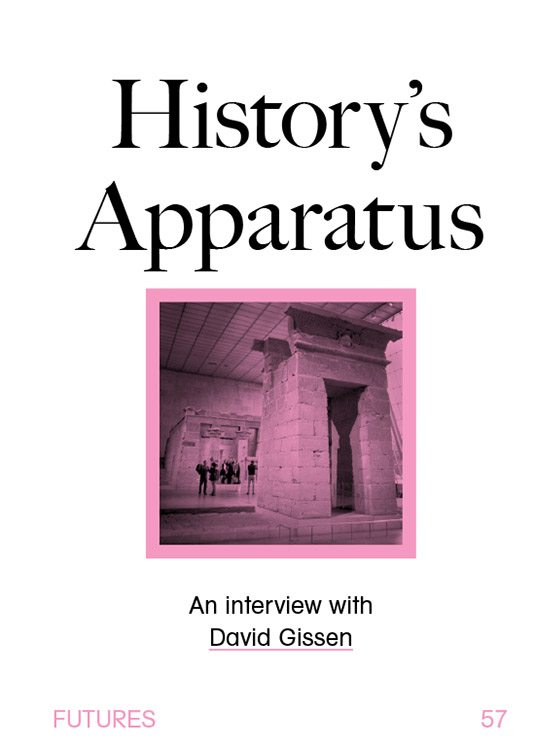
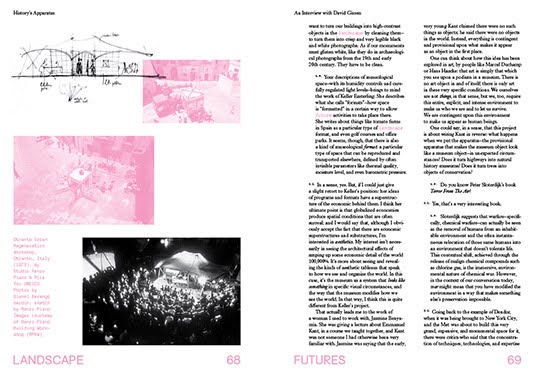
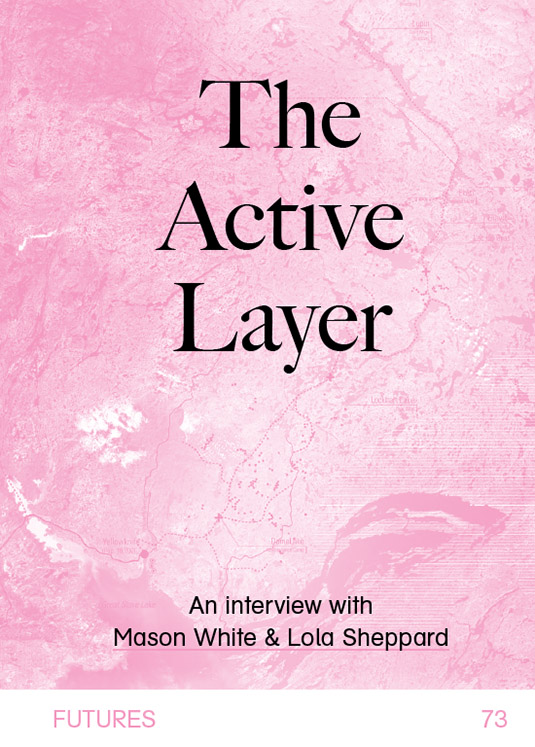
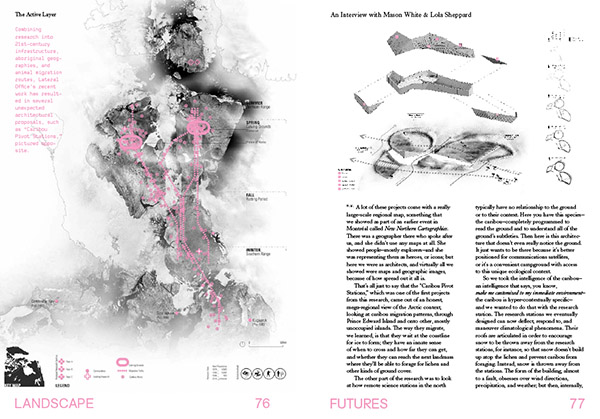
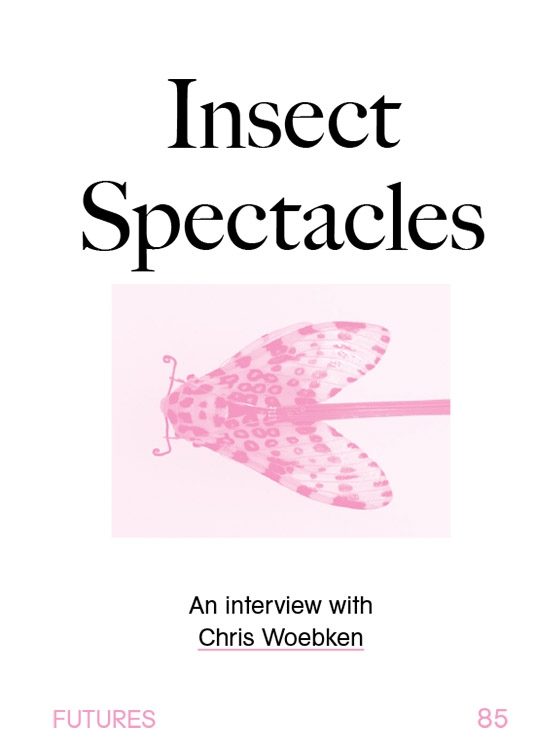
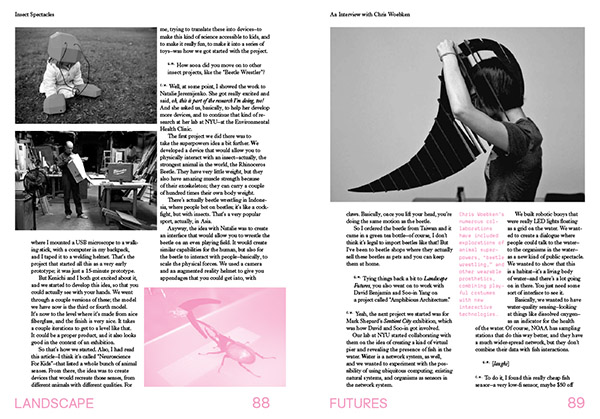
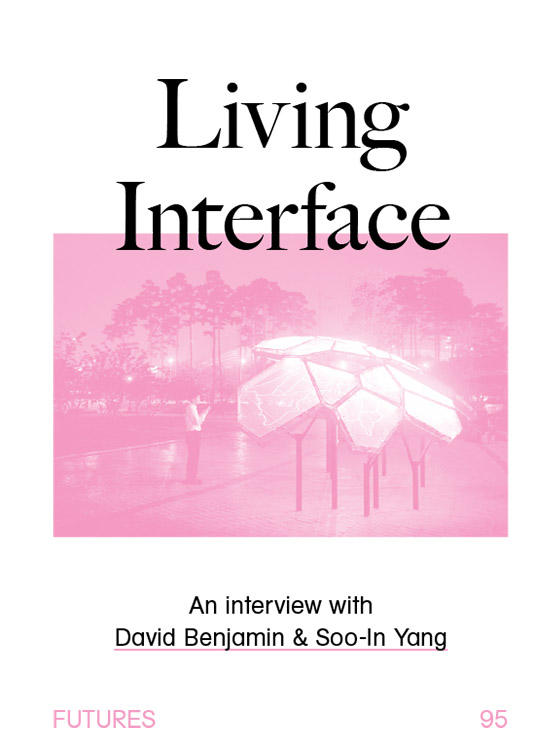
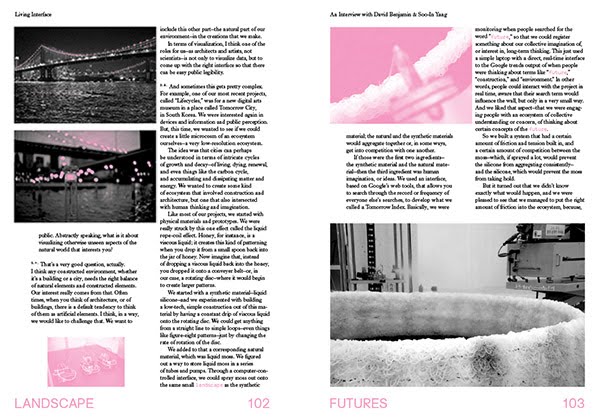
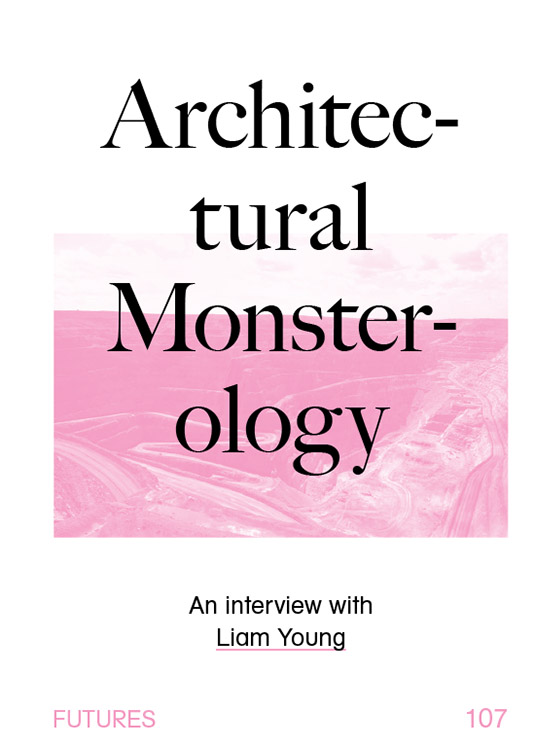
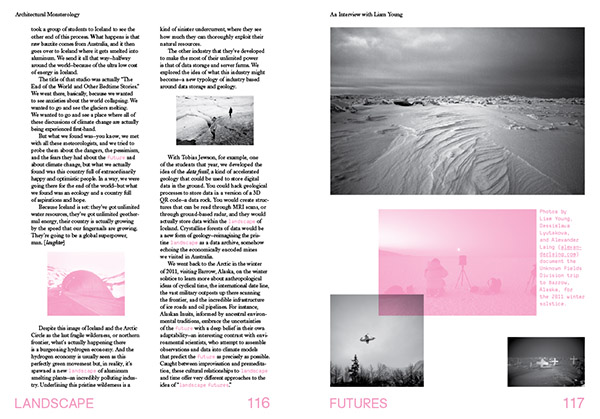
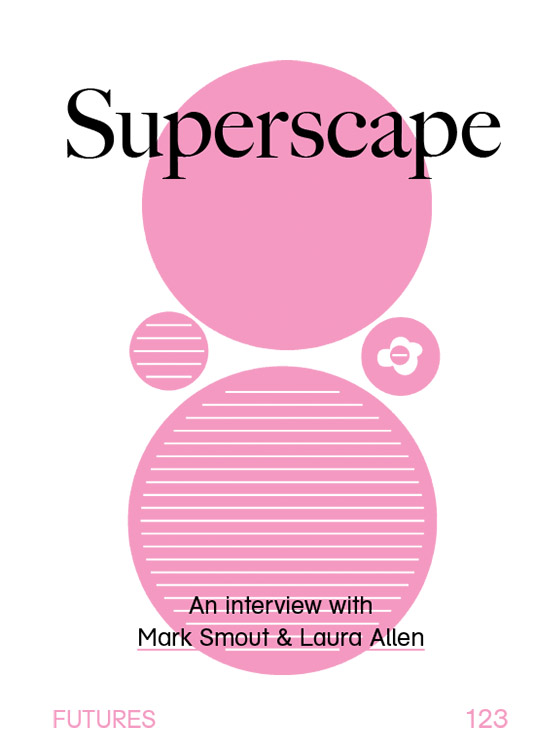
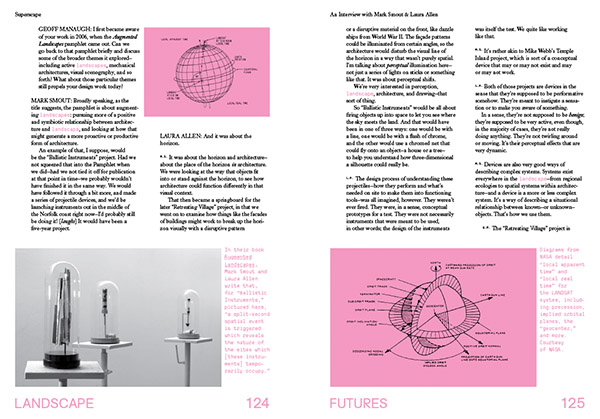
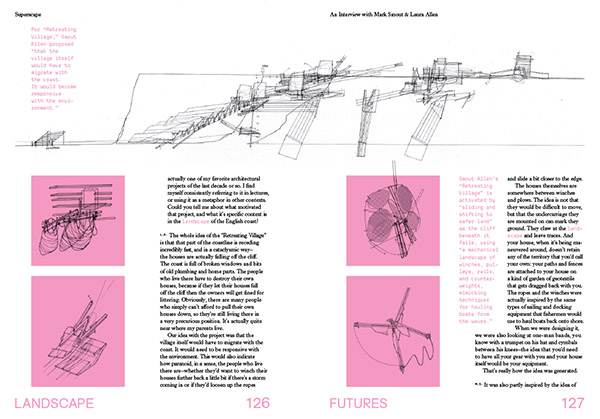 [Images: Interview spreads from Landscape Futures; book design by Everything-Type-Company].
[Images: Interview spreads from Landscape Futures; book design by Everything-Type-Company].

 [Image: From
[Image: From  The Museum has also recently announced a discounted
The Museum has also recently announced a discounted  [Image:
[Image: 
 [Images: From
[Images: From  [Image: From
[Image: From  [Image: “Electric Aurora” by Liam Young, from Specimens of Unnatural History].
[Image: “Electric Aurora” by Liam Young, from Specimens of Unnatural History]. [Image: From The Active Layer by Lateral Office; photo by
[Image: From The Active Layer by Lateral Office; photo by